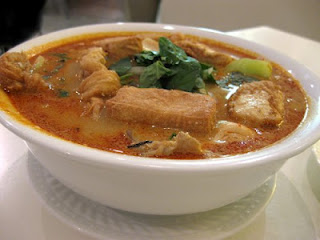What this article doesn't mention is that the water impact of Canberra on the Murray Darling Basin extends way beyond the household tap water supplied by dams. A huge amount of fresh water is used to produce food. The most water intensive are the animal products - meat, dairy and eggs. In fact, the water used to produce these is much more than the average household water use.
How much more? In this blog post I will calculate the water required to produce the dairy consumed by the average non-vegan person.
Did you know that the dairy industry is the second largest single user of irrigation water (just edged out by the cotton industry)? It is also the biggest single user of irrigated land in Australia. This is shown in a report sponsored by the dairy industry itself [1]. They estimate that the average dairy farm uses 800 litres of fresh water per litre of milk produced.
Imagine that — the 200 litres of water used for just one cup of milk would allow 4 people to have a shower, or would fill an empty bathtub.
The average person consumed 23.3 kg milk solids in 1998 [2], which translates to about 193 litres of regular milk. Simple arithmetic then shows that the average person's dairy consumption requires about 155,000 litres of fresh water per year. The average per capita household water consumption in Canberra is about 77,000 litres per year [3]. This means that:
the water required to supply dairy to the average non-vegan, lactose tolerant person is about twice their household water consumption.
But don't we HAVE to have dairy? No - as I said in my submission to the dietary guidelines, there are many plant foods that are more calcium-dense than dairy is. Also, the majority of the world's population is lactose intolerant.
When we see through dairy industry advertising, the absurdity of the idea that adult humans require the breast milk of another species becomes clear. And when you consider that dairy cows are routinely given calcium supplements, it makes you wonder — why don't we just take the supplements? Or better still, eat calcium-dense green vegetables, nuts and seeds?
If you must have a creamy white milky substance (and I do have the occasional coffee), soy milk uses far less water. Let's do the sums.
1 cup of soy milk has about 19.4 grams non-water content (assume this is all from soybean) [4].
1 kg of soybean requires 2106 litres of water [5].
Water required to produce 1 cup of soy milk = (19.4 ÷ 1000)×2106 = 40.9 litres
This ignores the small amount of water required for cooking the soybean and to fill the soy milk carton. These would not change the basic result:
Dairy milk requires several times more fresh water than soy milk does.
[1] Khan S. et al. (2010). Dairy water use in Australian dairy farms: Past trends
and future prospects. Water for a Healthy Country Flagship, CSIRO.
[2] Australian Bureau of Statistics (2000). Apparent consumption of foodstuffs. Product no. 4306.0.
[3] Australian Bureau of Statistics (2012). State and territory indicators. Product no. 1367.0
[4] USDA Nutrient Database http://ndb.nal.usda.gov/
[5] Hoekstra and Chapagain (2007). Water footprints of nations: water use by people as a function of their consumption pattern. Water Resources Management 21:35–48.



